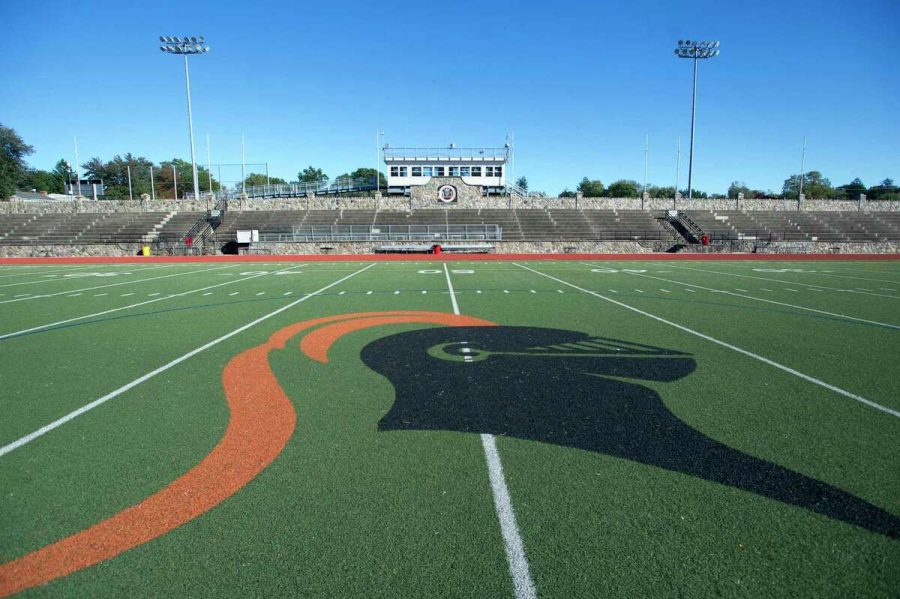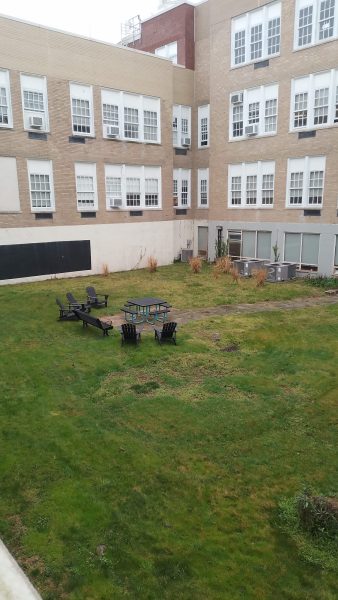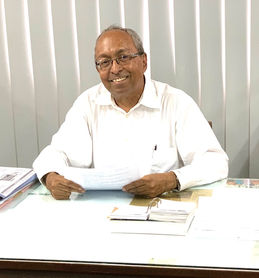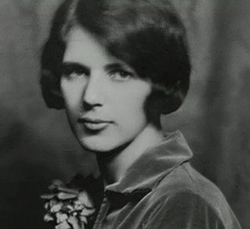The Legendary Names of Stamford High School athletics
February 10, 2023
Boyle Stadium, Kuczo Gym, and Robustelli Field – they are iconic in the Stamford High School community, but have you ever thought about how our sporting grounds acquired these names, or who they are honoring? Here is a deeper look into the stories of these athletic facilities and the incredible players after whom they are named.
The Kuczo Gymnasium at Stamford High School is named in honor of Stamford High alum Paul Kuczo. The gym has held many memorable events in the history of our athletics, including basketball, which is a program that was made possible by Kuczo. Not only did he make his mark as head coach in the basketball program, but he also led the football team to four state championships, ranging from 1937 to 1953. Furthermore, Kuczo was the head baseball coach for many of his years at Stamford High and even brought home a state title, giving him 881 total wins in his 40 years of coaching.
Prior to this four-decade winning spree, Kuczo was quarterback for the Villanova Football team on a full scholarship, as well as a pitcher for their baseball team. He even started playing professional football in 1929 for a short season, but decided to return his full attention to the football coaching position he acquired a year prior, in 1928. This was only the beginning of a legendary coaching career that lasted until 1968.
The most influential part of Kuczo’s story, however, started after he retired as a coach, when he took the job as Stamford High’s very own Athletic Director for 10 years. He spent much of his time collaborating with surrounding coaches to create the FCIAC conference and even served as its first president. Additionally, Kuczo helped form the Connecticut High School Coaches Association shortly after. This amount of dedication to Fairfield County earned him a Sports Writers’ Alliance Gold Key in 1958 and membership of the CT High School Coaches Hall of Fame in 1977, following his death in 1970. Yet, his son, John Kuczo, said that his father’s proudest honors were being inducted into the Stamford High Wall of fame in 2002 and having our gymnasium named after him, a place where he created so many memories and gave students so many more.
Another one of Stamford High’s greats joins Kuczo on the Stamford High Wall of fame. He is the face and name of our football stadium, one of the most historically significant high school sports facilities in Connecticut: Michael A. Boyle. Boyle’s coaching career started in this very stadium, where he led the Black Knights to a legendary winning streak not only on the local level, but on the national level as well. From 1911-1920, Boyle’s football team curated a total of 84 wins and 4 losses, making this time period nationally recognized as the greatest era of high school football. In his 31 years as head coach, Boyle racked up a total of 229 wins, 14 ties, and only 40 losses out of 283 total games played. This earned him a winning average of .809, which, for those who may not know football, is astounding. These wins did not come effortlessly for the young coach, as many of his athletes recall the tight ship that Boyle ran. Loyalty and respect were his top priorities for his team. Clearly, his strategies were effective. Stamford High school has yet to see a better winning record since Boyle’s legendary 31-year run.
There is no better word to describe Coach Boyle than “legendary”, as he is one of the most extraordinary people to walk the halls of Stamford High School. Because of this fact, the school stadium was officially named after him in 1942, ensuring that his legacy and values will live on through each coach and player who proudly wears a Black Knights jersey.
While Coach Boyle shaped Black Knight football from the sidelines, Andy Robustelli transformed the game on the field. Like Kuczo and Boyle, Robustelli dominated the athletics program during his time at Stamford High School, but his story didn’t end there. It was clear he had a bright future in sports after starring in both baseball and football throughout his high school years. As soon as he graduated in 1943, Robustelli started at the La Salle Academy in Long Island, then immediately enlisted in the Navy as soon as he turned 18. He fought bravely for our country during World War II before returning home in 1947 to attend Arnold College in Milford, CT to play football. Through his performance in college football, it was clear that Robustelli was seriously talented. His talents certainly did not go unnoticed, as he was later drafted into the NFL in 1951 to play for the Los Angeles Rams. During his rookie season, he played a major role in the Rams’ victory in the NFL team championship and went on to play for four more seasons with the Rams. He later joined the New York Giants in 1956, which was where he had a breakthrough in the NFL. During his time on the Giants, he played in six different championship games, made first team All-Pro six times, and only missed one game in all of his 14 seasons. This outstanding record earned him an induction into the Pro Football Hall of Fame in 1972 and a job as the Director of Operations for the Giants in 1974-1978.
In 2007, Robustelli was honored on our very own turf, after the renovation of the historic Boyle Stadium. To no one’s surprise, he was inducted into the Stamford High School Hall of Fame, and it was undeniable that there was no better fit for the name of the football field than “Robustelli Field”. Even during his service in the Navy, Andy showed strength and determination. His legacy serves as an example to every current and future athlete at Stamford High School.
All three of these remarkable men have influenced the history and reputation of not only this school, but of the entire city of Stamford. Robustelli’s discipline and competitive drive on the field as well as Kuczo’s and Boyle’s dedication to their teams have shown students from the past several generations how to carry themselves as athletes, students, friends, and people. So, the next time you attend or play in a sporting game at our stadium or gym, take a second to appreciate how much they did for us. You might feel even more grateful to be a part of Black Night Nation.














Larry Katz • Apr 21, 2023 at 8:40 am
very interesting article. Thanks